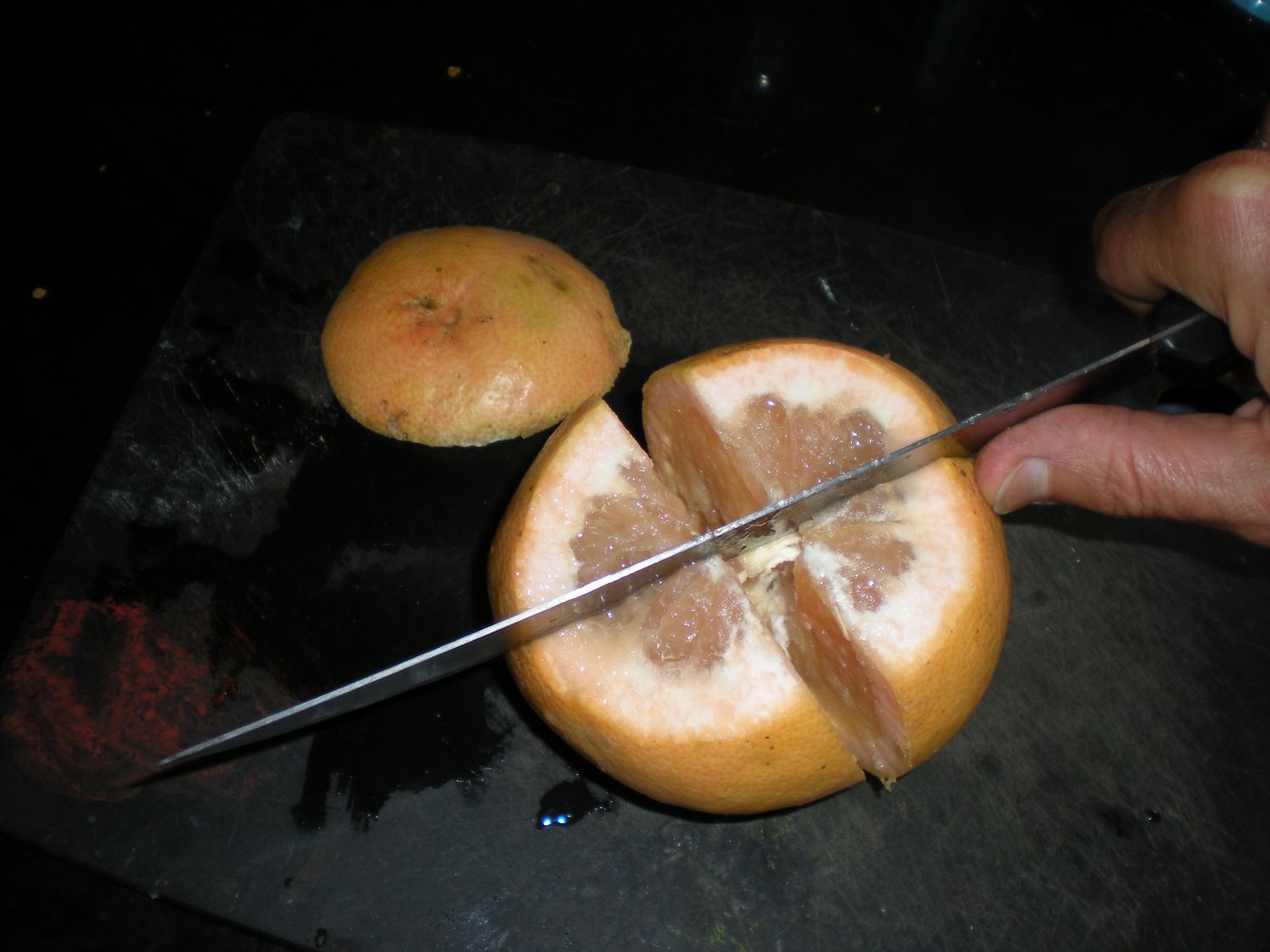UNITED STATES—If you’re going to eat lots of fresh fruits and veggies, it helps to know how to cut them cleverly. Then you can incorporate them into the busiest routine.
Once upon a time a in the San Fernando Valley a volunteer at a charity kitchen chopped laboriously away at the stubby ends of zucchini squash. She did it hundreds of times for the vast numbers this charity was feeding in the Valley. It occurred to me to ask why, is that really necessary? Is there any hygienic reason why the ends of the squash need to be sliced off and discarded?
First the volunteer asserted it was for health reasons that she couldn’t define, and she leaned on “it’s just better†bromide before becoming testy because I was asking where no one has asked before, and chipping away at it, which is a great way to get in hot water with people. Ask Socrates. But to paraphrase Socrates, the un-reflected life isn’t as much fun as the reflected life.
Here are some tips on cutting fruits and veggies gleaned from the Grady Kitchen, which operates on a reflective slant. The goal is to show you how to make the most of your fruits and veggies and enjoy them even on the run.
Oranges – First, cut off the stem end of the orange; then divide it with one through vertical slice. Follow this with a second through slice that crosses the first slice at angles, and keep slicing till you have wedges the size you desire. In seconds you have converted the orange into ready- to- eat segments without the fuss or loss of juice entailed in peeling.
What’s more, the peel on organic oranges that haven’t been sprayed with bug spray can be eaten, so you can eat an orange whole like an apple. No cutting required. Chinese medicine uses orange peels (mandarin specifically) to improve digestion, reduce bloating and gas. Other studies have linked a compound in the skins, called Polymethoxylated flavones (PMFs), to protection from cancer, heart disease and inflammation. Thanks New Zealand naturopath Leanne Pratt for this information.
Celery – Celery is a light, water-rich food, great in salads, simmered in soups along with the vegetable medley, or for munching on famously with peanut butter spread inside. To cut it rapidly, start from the top end of a whole celery bunch. In a firm chop cut across the top of all the stalks. (Why do we make that obligatory cut? Near as I can figure it’s the ‘cootie cut,’ employed to eliminate those vegetal surfaces we fear have been contaminated by a harvester’s knife drenched in E. coli.) From this point on moving down the stalks, that one cut yields a dozen pieces for your soup or salad. Move the knife stemward down the stalk, making slices a quarter inch at a time, and soon you will have heaping handfuls of celery bits to add to your broth or salad.
Flavorful and fragrant leaves—the most frequently discarded part of celery— can be used in diverse ways to spice up your cuisine. Their pungency makes a nice addition to any soup or bean dish. Instead of parsley, use celery leaves as an herb. It can stand in for cilantro in salsas or be added to salad for extra zest or sprinkled on top of just-served soup.
Red beets – For quickest enjoyment you can simply chop it into pieces and add it to a salad to add a tangy fresh delight. Raw beets have a hint of horseradish hot to them, so don’t be surprised. Also beets can be diced or cut into discs, ideal for mixing into salads. You can fry them or, avoiding use of grease, steam them and enjoy one of nature’s sweet substantial treats.
The beet leaves, too, are a bonus to a bunch of beets you buy at the market. (It’s like buying a veggie with a head of cabbage thrown in.) The spindly beet stems are a crunchy delight, and the frondy purplish green leaves, torn into smaller pieces, constitute of salad base. Steamed, they make a tartly flavored vegetable side.
Onions – A quick and easy way is to choose the root-side of an onion ball. Peel off the papery skin. Then holding the stem side, distinguishable because it contains one strand sticking out on top (the root side consists of many scratchy tiny dried roots.) Moving from one edge cut at quarter inch vertical knife strokes far as you can in one direction.
Then change the knife direction 90 degrees and cut all away across the previous slices, perpendicularly. Afterward, most of the onion, still held together by the stem (just barely), has been turned into a criss-cross grid. Now from cut a quarter inch-thick slice from the flat open round face of the onion. The little bits will cascade down. As you cut toward the stem, you’ll have a heap of diced onion for cooking or a salad.
All said and done, I have found no material whatsoever to support hygienic reasons for cutting the stubby ends off a zucchini, and wasting those pieces. But all the recipes dictate this. Maybe we started doing it because it looks nice. And, you know, doing something just because it looks nice might be one of the best reasons to do something in this topsy-turvy kitchen of life.
Humorist Grady Miller is the author of “Lighten Up Now: The Grady Diet,†available on Amazon. He can be contacted at grady.miller@canyon-news.com.






